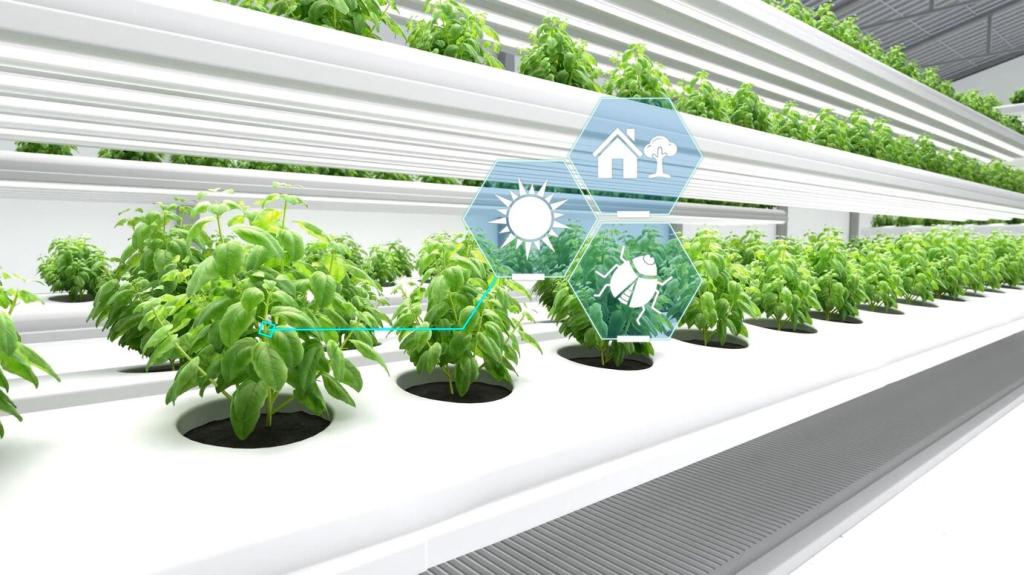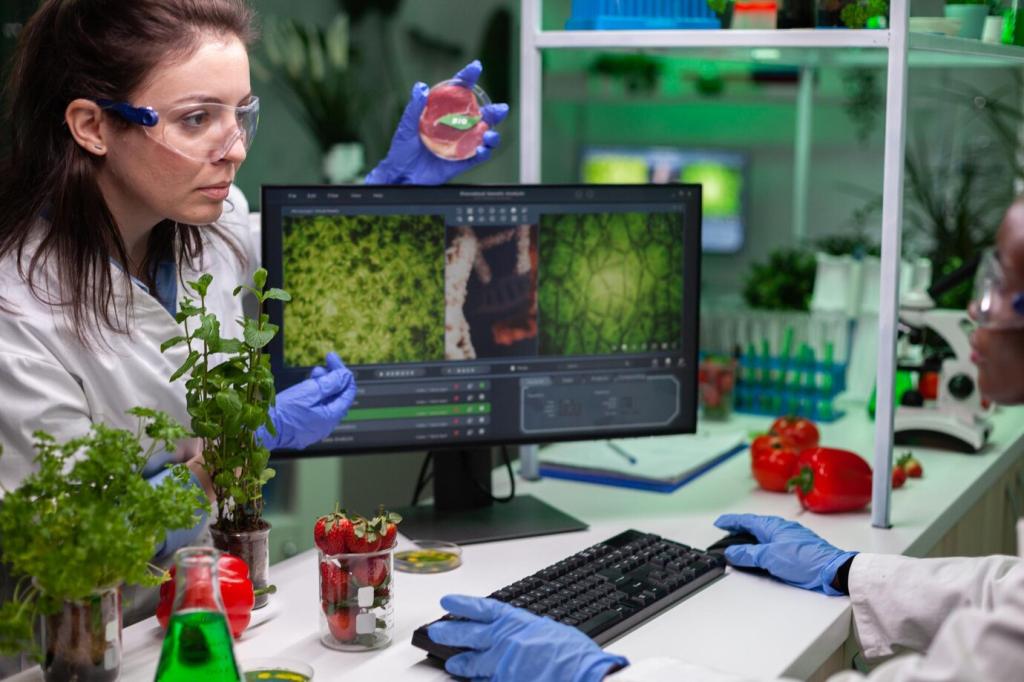
Smart Urban Farming Techniques
Smart urban farming techniques are transforming city landscapes, bringing efficient and sustainable agriculture directly to urban centers. Utilizing advanced technologies and resource-conscious strategies, these methods allow residents and businesses to grow fresh produce even in limited spaces while reducing environmental impact. Embracing smart urban farming not only enhances local food security but also fosters greener, healthier, and more self-sufficient communities in the heart of urban environments.

IoT-Based Monitoring Systems
Internet of Things (IoT) devices have revolutionized urban farming by making it possible to monitor crops continuously. Sensors track crucial factors such as soil moisture, temperature, humidity, and light intensity. These data points are sent in real-time to integrated management platforms, allowing urban farmers to respond instantly to changes and minimize any resource waste. By automating the monitoring process, urban farms become more resilient to challenges like extreme weather, infrastructure limitations, or inconsistent water supply. This not only improves crop yield and quality but also enables adaptation to the dynamic urban environment.
Automated Irrigation Solutions
Automated irrigation systems use precise control and scheduling to deliver water directly when and where it’s needed. Powered by sensor data and intelligent algorithms, these systems can adjust watering schedules based on plant needs and environmental conditions. This approach drastically reduces water consumption—a critical advantage in cities where resources are often limited. Automated irrigation can be remotely controlled through mobile apps, allowing urban farmers to optimize water usage, reduce labor, and ensure consistent plant health. Greater efficiency means healthier crops and significant cost savings for both rooftop gardens and larger urban greenhouses.
Smart Fertilization Methods
Fertilization in urban farming becomes smarter with targeted delivery and real-time nutrient monitoring. Digital nutrient dispensers and soil sensors work together to supply crops with the exact nutrients required at various growth stages. This responsive approach prevents both over-fertilization, which can harm surrounding city ecosystems, and under-fertilization, which stunts plant growth. Smart fertilization not only increases crop productivity but also ensures environmental sustainability by reducing nutrient runoff into urban waterways. With these enhanced methods, city farmers achieve optimal harvests while maintaining harmony with their surroundings.
Vertical Farming Innovations
LED Lighting Systems
LED lighting systems are essential components of vertical farming, providing crops with fine-tuned light spectra that mimic natural sunlight. By adjusting light intensity and wavelength, these systems help control plant growth stages—accelerating germination, optimizing photosynthesis, and improving nutritional content. Energy-efficient LEDs also significantly reduce operational costs and environmental impact compared to traditional lighting. In urban settings where natural light can be scarce, these systems ensure that every plant receives the precise conditions it needs, thus maximizing yields within compact vertical structures and supporting greater urban food independence.
Hydroponic Growing Techniques
Hydroponics, a soil-less cultivation method, enables urban farmers to grow crops in nutrient-rich solutions circulated through vertical racks. This technique is particularly well-suited to cities where arable land is scarce or unavailable. In hydroponic systems, water and nutrients are efficiently recycled, reducing overall consumption and keeping waste to a minimum. By supporting rapid plant growth and higher density planting, hydroponics ensures that urban vertical farms can produce more food with fewer resources. The integration of sensors and automated controls further enhances productivity, making it one of the most scalable solutions for city agriculture.
Climate-Controlled Environments
Maintaining a stable environment is crucial for successful vertical farming in cities. Advanced climate control systems regulate factors such as temperature, humidity, and CO2 levels within urban farms, ensuring consistent crop growth regardless of external weather or seasonal fluctuations. Airflow systems, dehumidifiers, and digital controllers allow for real-time adjustments to create the perfect microclimate for each crop variety. This precision reduces the risk of disease and pest infestation, promotes uniform yields, and allows urban farmers to extend growing seasons—all in limited urban spaces, from rooftops to repurposed warehouses.

Rainwater Harvesting Integration
Rainwater harvesting is a key component of sustainable urban farming, capturing and storing precipitation for irrigation and other agricultural uses. Rooftop and balcony farms can easily install rainwater collection systems that filter and channel water into storage tanks. This practice not only supplements municipal water sources but also reduces pressure on urban infrastructure during heavy rainfall. By using harvested rainwater, urban farms conserve potable water, lower operational costs, and contribute to the resilience of city water systems. Intelligent controls can further optimize usage, ensuring availability during dry periods and maximizing sustainability.
Organic Waste Recycling
Smart urban farms take advantage of local organic waste by converting it into valuable compost or biofertilizer. Food scraps and plant residues are collected and processed in onsite or community composting systems, closing the nutrient loop within the city. This not only diverts waste from landfills, reducing methane emissions, but also provides high-quality soil amendments that enhance crop yields. Advanced composting solutions, some using sensor-enabled bins, track temperature and moisture to speed up decomposition and ensure consistency. By adopting these recycling methods, urban farms create holistic ecosystems and set examples of circular economy in practice.
